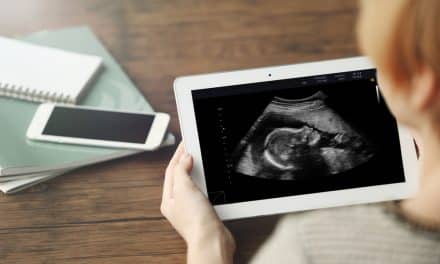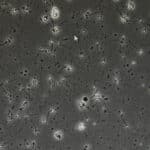Fertility tests are generally carried out in patients who are having difficulty conceiving. However, they can also be useful if you have a family history of miscarriage or other gynaecological issues, if you’re planning to postpone motherhood, or simply if you want to keep the option of having children open for the future. The aim is to check that everything is functioning as it should and to assess your chances of conceiving.
Infertility issues are more common than they may seem. They affect around 15% of couples, and in approximately 30% of cases, the cause is linked to both male and female factors. The advantage of early testing is that it allows for quicker diagnosis and earlier treatment if needed, giving you more time to make informed decisions.
What tests are involved? Are they lengthy or complicated?
“In general, and unless a specific test is required, fertility assessments are straightforward and the results are available within a few weeks”, explains Dr Marina Solsona, fertility specialist at Dexeus Mujer. “An initial consultation is needed to assess overall health, diet, lifestyle, medical history and any family history of fertility issues.” This is followed by a blood test including a hormone panel, a physical examination, a cervical smear (to rule out infections or abnormal cells) and a transvaginal ultrasound. For patients over the age of 40, a mammogram or breast ultrasound may also be recommended. If you have a male partner, we offer the option of undergoing joint fertility testing.
But what information is most important? And what do specialists look for when evaluating fertility? Each case is assessed individually, so the specific tests will always be tailored to your needs. However, some routine tests are performed as part of the standard protocol. Here are the main ones:
1. Assessment of ovarian reserve
This involves a transvaginal ultrasound between day 3 and 5 of your menstrual cycle. The aim is to count the number of follicles in each ovary. Follicles are fluid-filled sacs, each containing an immature egg.
If more than 10 follicles are detected in total (across both ovaries), this is considered a good ovarian reserve. A count of 4 or fewer follicles per ovary, or fewer than 7 in total, is considered low. However, this does not necessarily mean that pregnancy is not possible or that the eggs are of poor quality.
2. Hormone levels: AMH, LH, FSH, progesterone and oestradiol
Hormone analysis is key to identifying endocrine issues that could affect the menstrual cycle and to assessing ovarian reserve. The main hormones tested are:
– Anti-Müllerian Hormone (AMH): This hormone is produced by the follicles. High levels (above 3.1 ng/ml) indicate a strong ovarian reserve. Low levels (under 1 ng/ml) suggest diminished ovarian reserve and a shorter reproductive window.
– FSH, LH and oestradiol: FSH (Follicle-Stimulating Hormone) stimulates and selects follicles for growth; LH (Luteinising Hormone) Triggers ovulation; and oestradiol is produced by maturing follicles. All these hormones help assess your fertility potential. In general, FSH levels above 10 and/or baseline oestradiol levels above 80 pg/ml may indicate low ovarian reserve, although these values can fluctuate more from cycle to cycle than AMH.
– Progesterone: This hormone is produced by the ovary after ovulation. It helps confirm whether ovulation has occurred and can identify anovulatory cycles. Adequate levels are typically above 5–10 ng/ml.
3. Transvaginal ultrasound
This type of ultrasound scan is used to examine the reproductive organs, including the ovaries and uterus. It is used to detect any potential abnormalities, such as fibroids, polyps or cysts, as well as structural problems, such as malformations or dysfunctions affecting the uterus or other parts of the reproductive system. It also allows the follicle count mentioned above to assess ovarian reserve.
4. Physical examination
A clinical examination of the breasts and a bimanual pelvic exam are performed to check for any abnormalities. This is done in the doctor’s office and is similar to the examination performed during a standard gynaecological check-up.
Additional fertility tests for women
In some cases, additional tests may be needed. The most common are:
Karyotype analysis: A genetic test that examines the number and structure of chromosomes. It can identify chromosomal abnormalities that may lead to infertility, recurrent miscarriages or developmental issues during pregnancy.
Hysteroscopy: A procedure in which a small camera is inserted through the vagina and cervix to inspect the uterine lining (endometrium). It can detect fibroids, polyps, uterine malformations, retained tissue from miscarriage or lesions suggestive of pre-cancerous or cancerous changes.
Endometrial biopsy: Recommended in cases of implantation failure to evaluate endometrial receptivity. It involves taking a small tissue sample from the uterine lining for analysis to detect infections, cellular abnormalities or conditions like endometrial hyperplasia.
Hysterosalpingography: A slightly more complex test similar to an X-ray, which involves using iodine-based contrast introduced via the vagina. It helps determine whether the fallopian tubes are blocked or if there are uterine abnormalities that could prevent sperm from reaching and fertilising the egg. An alternative method is saline infusion sonography (salpingosonography), which uses ultrasound instead of X-rays to produce the images.















